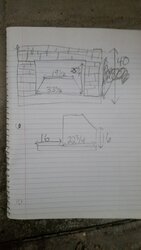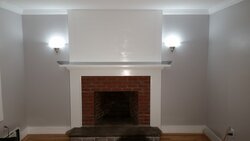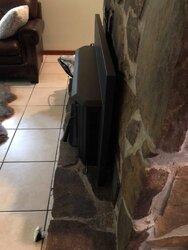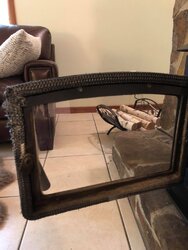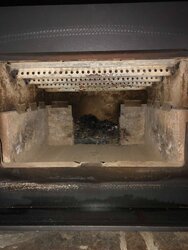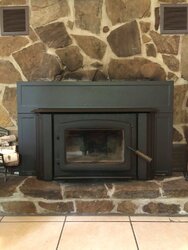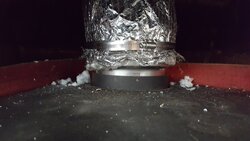I have been doing a bunch of research and I am ready to buy the stove. I found one used somewhat near me. The stove was purchased in 2017 and used one season. The owner says 5 cords were burned. What is a reasonable price for one? He has it listed for $1,900 without the liner. My house is 1500 sq ft ranch and from multiple people here they said get the biggest stove that can fit in your fire place. Since my fireplace tapers in the Enviro models are what I had planned on anyways. I was going to buy brand new if need be. I had a question about clearances. I am fine for everything except this section. C - bottom to max. ¾” combustible facing 19½. I have inserted a picture of my set up. The stove is 19 3/4 high. to the bottom trim under the mantle I come in at 18 3/4. That white trim piece is 1 5/8 off of the bricks. Should I be concerned? I will be doing the install with my father. Thanks in advance.
